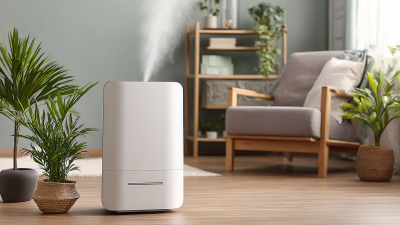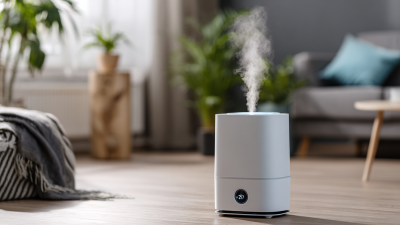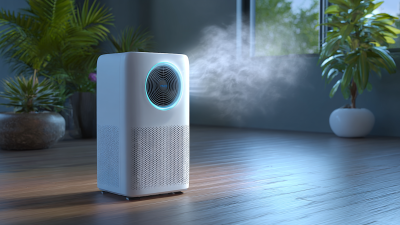When it comes to maintaining a comfortable and healthy indoor environment, the role of a furnace humidifier cannot be overstated. As heating systems operate, they often strip away moisture from the air, leading to dry conditions that can affect both health and comfort. Expert in HVAC systems, Dr. Emily Reynolds, emphasizes, "Regular furnace humidifier maintenance is crucial not only for your home’s atmosphere but also for the longevity of your heating system."

To ensure your furnace humidifier operates effectively, adhering to essential maintenance tips is vital. These practices not only enhance the performance of your humidifier but also contribute to energy efficiency, keeping your utility bills in check. A well-maintained humidifier can improve air quality, reduce respiratory problems, and prevent the damaging effects of excessive dryness in your living space.
In this article, we will explore the top 10 essential tips for furnace humidifier maintenance, equipping you with the knowledge needed to keep your system in optimal condition. By following these guidelines, you can enjoy a more comfortable home environment throughout the heating season while extending the lifespan of your humidification equipment.
Understanding humidity levels is crucial for effective furnace humidifier maintenance. The ideal indoor humidity level typically ranges from 30% to 50%. When humidity levels fall below this range, air can become excessively dry, leading to discomfort and potential health issues such as dry skin, respiratory problems, and increased susceptibility to colds. Conversely, if humidity levels exceed 50%, it can create an environment conducive to mold growth and damage to wooden structures. Monitoring indoor humidity with a hygrometer helps ensure that the furnace humidifier operates efficiently and maintains a balanced environment.
Another essential variable in furnace humidifier maintenance is the regular cleaning and maintenance of the unit itself. Accumulated mineral deposits can hinder the performance of the humidifier and negatively affect the indoor air quality. Ensuring water is changed regularly and cleaning the reservoir can help prevent bacteria and mold build-up. Furthermore, adjusting the humidifier settings seasonally in response to outdoor temperature changes and indoor moisture levels will optimize its effectiveness, ensuring that your home remains comfortable and healthy throughout the year.
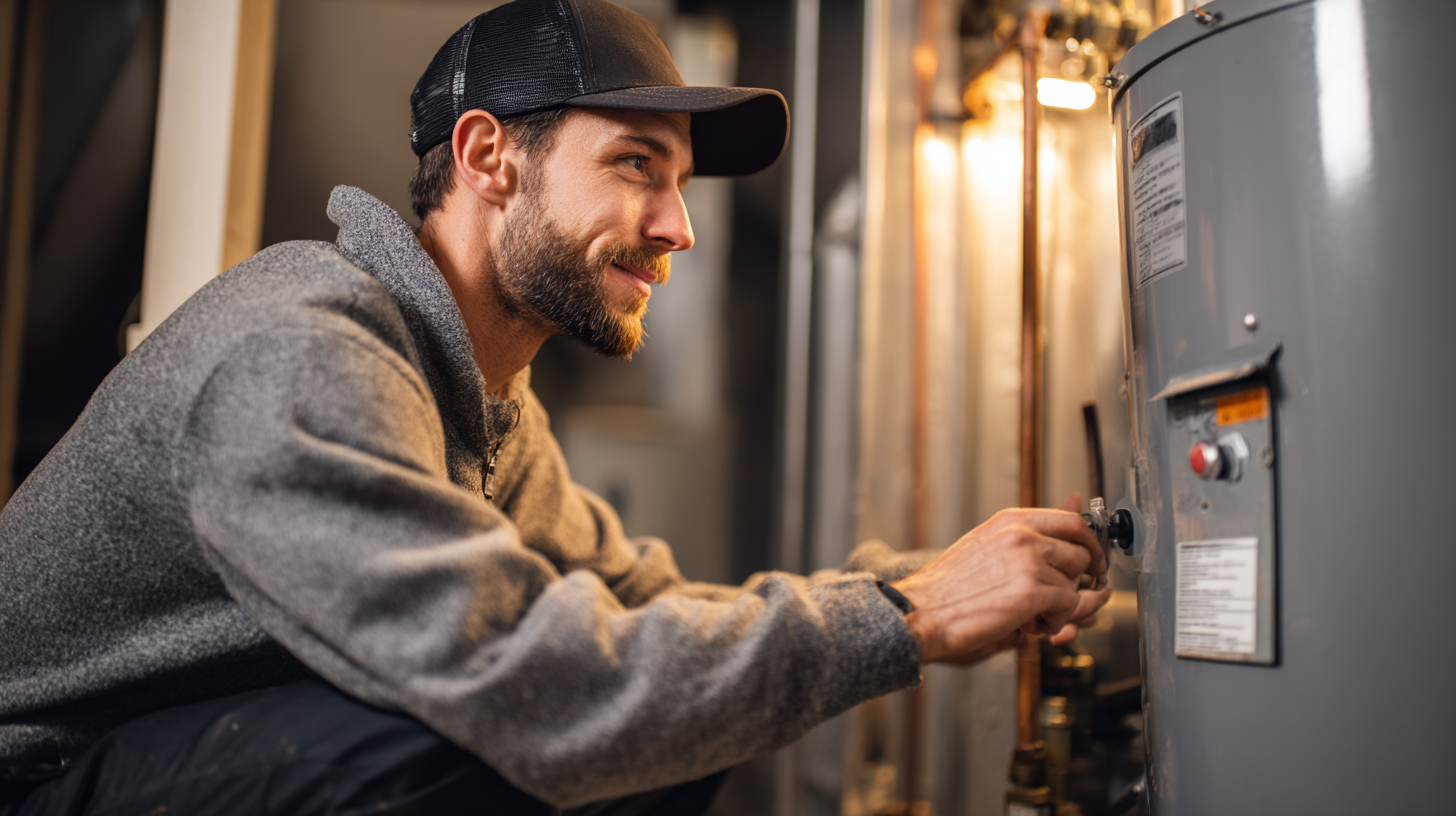 Furnace humidifiers play a crucial role in maintaining indoor air quality, particularly in dry winter months. To ensure optimal performance, it is essential to evaluate key components like filters, pads, and reservoirs regularly. Filters, for instance, should be cleaned or replaced according to the manufacturer’s recommendations to prevent dust buildup, which can impede airflow and diminish efficiency. Keeping the filters in top condition not only enhances the humidifier’s performance but also contributes to the overall health of your home environment.
Furnace humidifiers play a crucial role in maintaining indoor air quality, particularly in dry winter months. To ensure optimal performance, it is essential to evaluate key components like filters, pads, and reservoirs regularly. Filters, for instance, should be cleaned or replaced according to the manufacturer’s recommendations to prevent dust buildup, which can impede airflow and diminish efficiency. Keeping the filters in top condition not only enhances the humidifier’s performance but also contributes to the overall health of your home environment.
Equally important are the evaporation pads, which facilitate moisture dispersion into the air. Regular inspection and replacement of these pads are necessary to ensure they do not become saturated or clogged, as this can lead to inefficient operation. Moreover, the reservoir should be cleaned periodically to avoid microbial growth, which can adversely affect air quality. By diligently maintaining these components, homeowners can enhance the effectiveness of their furnace humidifiers, ensuring a comfortable atmosphere throughout their living spaces during the harsh cold months.
Maintaining the water quality in furnace humidifiers is crucial for both health and efficiency. Industry standards emphasize the importance of high purity and balanced chemical composition in the water used. According to the ASHRAE (American Society of Heating, Refrigerating and Air-Conditioning Engineers) guidelines, water quality should meet specific criteria: less than 10 parts per million (ppm) of total dissolved solids (TDS) is recommended to prevent scale buildup, which can degrade performance and lead to increased energy consumption.
Moreover, improper water chemistry can foster microbial growth such as bacteria and mold, which can be harmful to health. The CDC (Centers for Disease Control and Prevention) reports that humidifiers using contaminated water can release these pathogens into the air, potentially causing respiratory issues. Regularly testing the water quality for pH and disinfectant levels is essential, with an ideal pH range of 6.5 to 8.5 being necessary to ensure optimal function and safety. By adhering to these standards, homeowners can extend the lifespan of their humidifiers while improving indoor air quality.
| Tip Number | Maintenance Tip | Recommended Frequency | Importance |
|---|---|---|---|
| 1 | Change the water regularly | Weekly | Prevents mineral buildup |
| 2 | Clean the tank | Monthly | Reduces bacteria growth |
| 3 | Replace filters | Every 3 months | Ensures efficient humidity control |
| 4 | Monitor humidity levels | Weekly | Prevents over-humidifying |
| 5 | Inspect for leaks | Monthly | Prevents water damage |
| 6 | Check for sediment | Monthly | Ensures water quality |
| 7 | Use distilled water | Every refill | Reduces mineral buildup |
| 8 | Test water quality | Quarterly | Ensures chemical balance |
| 9 | Replace the humidifier | Every 5 years | Maintains efficiency |
| 10 | Consult with a professional | Annually | Ensures proper function |
As winter approaches, ensuring your furnace humidifier is ready for the cold months is crucial for maintaining a comfortable and healthy home environment. A well-functioning humidifier can combat dryness, preventing issues such as dry skin and respiratory problems. To prepare your humidifier for winter operations, start with a thorough inspection of the unit. Check for any signs of wear and tear, and ensure that all components are clean and free from blockages.
One essential tip is to clean the water panel or filter regularly, as this helps maintain efficient humidity levels. It's also important to replace the filter if it shows signs of heavy buildup or damage; a clean filter improves airflow and keeps your humidifier running smoothly. Remember to adjust the humidity settings according to your comfort and the specific conditions of your home. Maintaining an optimal humidity level between 30% and 50% helps ensure you stay warm and healthy all winter long.
Additionally, don’t forget to check the drain line for any clogs or obstructions. Ensuring proper drainage helps prevent water damage and the growth of mold or mildew. By taking these essential steps, your furnace humidifier will be fully prepared to deliver the moisture needed for a cozy winter season.
When it comes to maintaining a furnace humidifier, identifying common faults and troubleshooting them is essential for ensuring the system operates efficiently. Frequent issues can arise from improper installation, mineral buildup, or lack of regular maintenance. For instance, if you notice that the humidifier is not producing enough moisture, it could be due to a clogged filter or a malfunctioning water panel. These components should be checked and replaced as necessary to restore proper function.
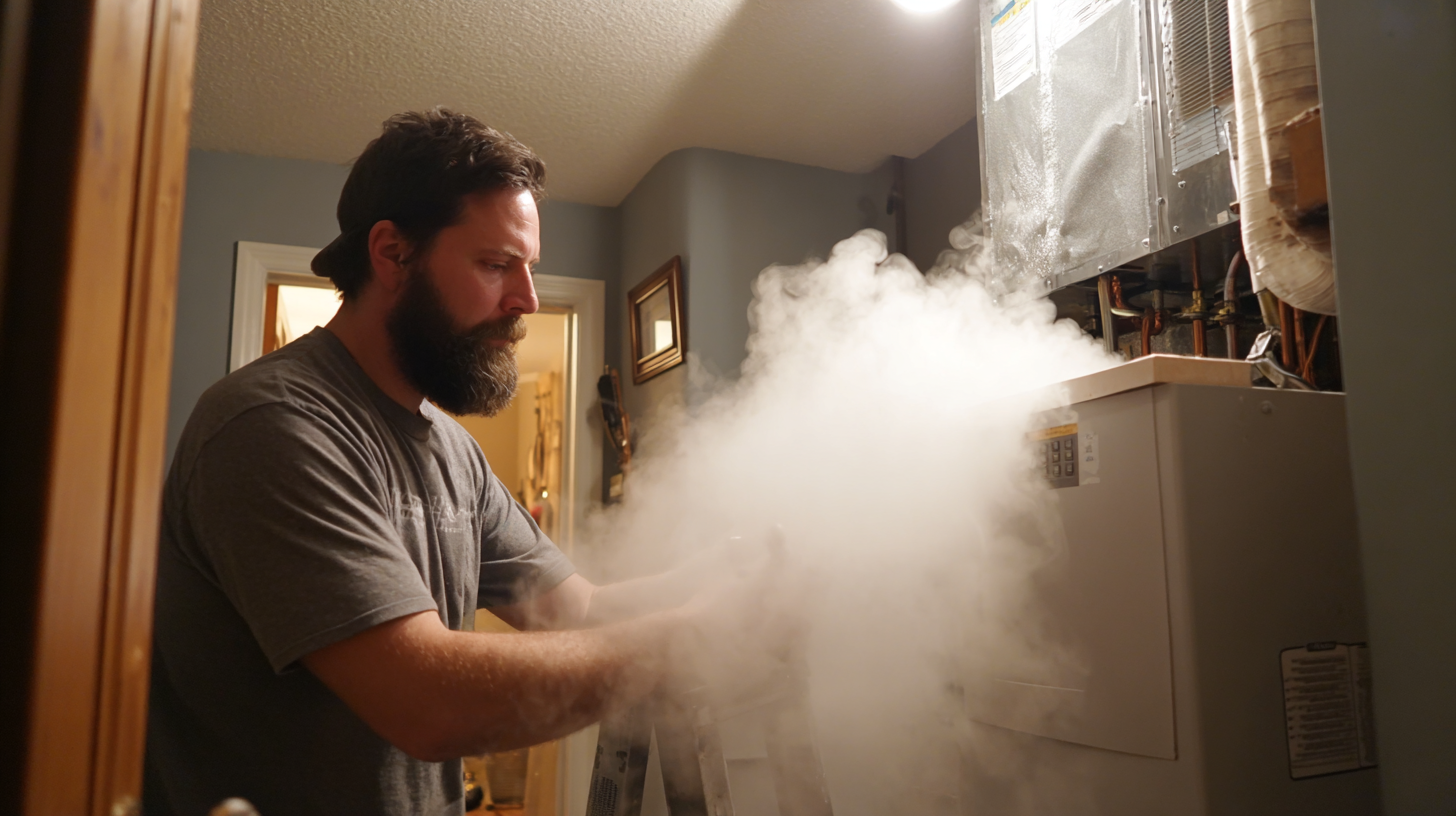
Another common problem is the unit leaking water, which can be caused by faulty seals or an overflow due to high water pressure. Regularly inspecting seals and adjusting water pressure can prevent leaks that may lead to water damage in your home. Additionally, if your humidifier emits unusual noises, this could indicate internal issues that require immediate attention. By understanding these typical faults and applying effective troubleshooting techniques, homeowners can prolong the lifespan of their humidifier systems and maintain an optimal indoor environment.
